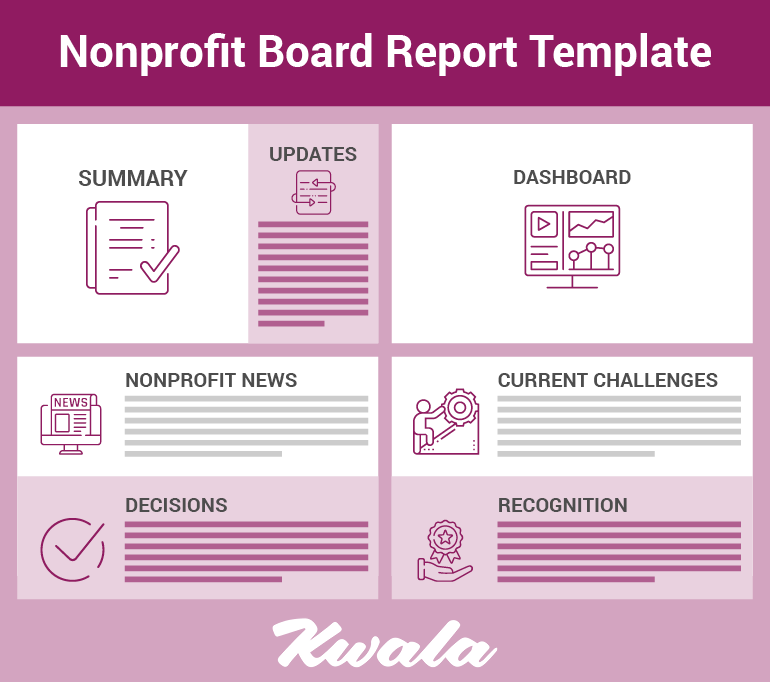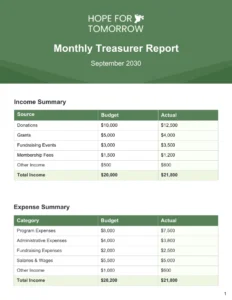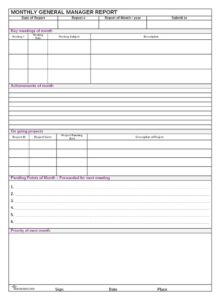Preparing a comprehensive and engaging report for your board of directors is one of the most vital responsibilities for any nonprofit executive director. It’s more than just a formality; it’s an opportunity to communicate your organization’s progress, celebrate successes, highlight challenges, and secure the strategic guidance needed to move forward. A well-structured report ensures that your board members, who volunteer their time and expertise, receive all the essential information efficiently and effectively, enabling them to make informed decisions that benefit your mission.
However, crafting these reports from scratch each time can be a significant time commitment, pulling you away from other critical tasks. Many executive directors find themselves grappling with what information to prioritize, how to present it clearly, and what level of detail is appropriate for board consumption. The goal is to provide a snapshot that is both comprehensive and concise, empowering your board without overwhelming them.

This is where a robust nonprofit executive director board report template becomes an invaluable asset. It provides a standardized framework, helping you organize your thoughts, ensure consistency across reports, and save precious hours in preparation. By adopting a template, you can streamline your reporting process, focus on the content rather than the format, and ultimately enhance the quality and impact of your communications with the board.
Crafting an Effective Board Report: Key Sections and Best Practices
A truly effective board report does more than just present data; it tells a story about your organization’s journey, its impact, and its future direction. It’s a strategic communication tool that should resonate with your board members, sparking meaningful discussions and guiding their oversight role. Think of it as a comprehensive overview that allows them to grasp the pulse of the organization quickly, understanding both the triumphs and the areas needing their attention and support. The best reports strike a balance between quantitative metrics and qualitative narratives, painting a complete picture of your nonprofit’s health and progress towards its mission.
Financial Health Snapshot
Understanding the organization’s financial standing is paramount for any board. This section should offer a clear, concise summary of your financial performance without getting lost in excessive detail. Provide a high-level overview of revenue and expenses, comparing actuals to budget. Highlight any significant variances and explain the reasons behind them. Include key financial indicators such as cash on hand, unrestricted net assets, and burn rate, if applicable. The aim is to assure the board of sound financial management and flag any potential concerns that require their strategic input, ensuring fiscal responsibility remains a top priority for everyone involved.
Program Impact and Success Stories
This is often the most inspiring part of the report, showcasing the real-world difference your nonprofit is making. Detail the progress of your core programs against their stated goals and objectives. Use a mix of data, such as the number of clients served or specific outcomes achieved, alongside compelling anecdotes or beneficiary testimonials. Sharing success stories humanizes the statistics and reminds the board of the vital mission they are helping to support. Conversely, also acknowledge any program challenges or setbacks and outline the strategies being implemented to address them, demonstrating transparency and proactive problem-solving.
To ensure your board report is comprehensive and actionable, consider including these essential elements:
- Executive Summary: A brief, high-level overview of the report’s key takeaways, allowing busy board members to quickly grasp the most important points.
- Strategic Plan Updates: Report on progress towards specific strategic goals and objectives, noting milestones achieved or areas needing recalibration.
- Fundraising and Development: Summarize recent fundraising activities, donor engagement, grant applications, and overall progress toward fundraising goals.
- Marketing and Communications: Briefly touch upon key communication efforts, public relations, and brand visibility initiatives.
- Human Resources/Staffing Updates: Provide updates on staffing changes, volunteer engagement, professional development, and any organizational culture initiatives.
- Operational Highlights and Challenges: Share any significant operational achievements, new initiatives, or obstacles encountered, along with proposed solutions.
- Board Governance Matters: Include any updates pertinent to board committees, upcoming board development opportunities, or policy reviews.
- Action Items and Discussion Points: Clearly outline items requiring board approval, input, or discussion, making it easy for members to prepare.
Leveraging a Nonprofit Executive Director Board Report Template for Clarity and Efficiency
Implementing a standardized nonprofit executive director board report template can revolutionize how your organization communicates with its governing body. Beyond just saving time, a template ensures consistency in the information presented over time, allowing board members to easily track trends and understand the long-term trajectory of the organization. It acts as a guide, prompting you to include all necessary information while helping to avoid common pitfalls like omitting critical updates or presenting data in an inconsistent format. This consistency fosters greater trust and confidence within the board, as they know exactly what to expect and where to find key information.
The beauty of a well-designed template is its inherent flexibility. While it provides a solid structure, it should also be easily customizable to reflect the unique aspects of your nonprofit, its current priorities, and the specific needs of your board. You can tailor sections to focus more heavily on particular programs during a growth phase, or dedicate more space to financial projections during a capital campaign. Regularly reviewing and refining your template based on board feedback ensures it remains a dynamic and highly relevant tool, always serving the evolving communication needs of your organization.
Ultimately, using a robust nonprofit executive director board report template elevates the entire board meeting experience. It shifts the focus from deciphering information to engaging in meaningful dialogue about strategy, impact, and sustainability. When board members arrive prepared with a clear understanding of the organization’s current state, discussions become more productive, decisions more informed, and the board’s collective wisdom can be fully leveraged to support and advance your mission effectively.
By embracing a structured approach to board reporting, executive directors can not only streamline their workload but also significantly enhance the strategic partnership with their board. This enables more focused discussions, leading to better decisions that propel your mission forward with greater impact and resilience.



